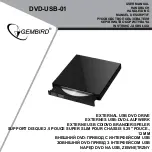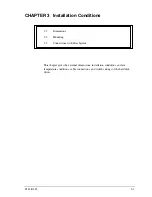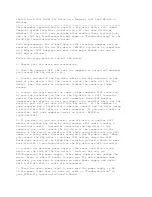
WD Scorpio MX375M
Product Features
2679-771293-A01
RELEASED 11/17/10 (WD CONFIDENTIAL)
21
voltage busses. This residual droop needs to be eliminated or at least reduced to a very small value
because most power distribution budgets do not provide allowances for this droop. Low ESR bulk
capacitors installed on the backplane voltage busses for each hot plug connector can minimize this
droop. Organic dielectric aluminum electrolytic's like OSCON capacitors are a good choice.
3.7.1.2
Capacitor Inrush Current Issues
Tantalum decoupling capacitors can be damaged if inrush current is excessive. Inrush current issues
with Tantalum capacitors are complex, but manufactures recommend, as a general rule, 1 ohm of
resistance for every volt being switched or a maximum inrush current of 1 amp. See "Surge in solid
Tantalum Capacitors" by John Gill of AVX Corporation. This limits the lowest value of precharge
resistance for each voltage bus used to a resistance in ohms equal to the bus voltage in volts.
3.7.1.3
Connector Inrush Current Issues
The SATA specification requires 1.5 amps current capacity for every power connector pin. This is well
above the initial precharge resistor inrush current limit set by tantalum capacitor requirements. The
second inrush current spike when hard power connection is made along with whatever DC current has
been established at that time could exceed 1.5 amps but for too short a period of time (<1 ms) to have
any affect on connector reliability.
3.7.1.4
Disk Drive Hot Plug Insertion Velocity
The delay between precharge resistor connections and final power connections must be sufficient to
allow precharge resistor charging of the disk drives power busses to at least 90% of maximum value the
precharge resistors are capable of. The following compares calculated maximum allowable insertion
velocity with SATA specification insertion velocity analysis.
3.7.1.4.1 Calculated Velocity
The minimum SATA mating connector staggered pin spacing is 0.35 millimeters. Disk drives typically
have around 20mF input capacitance on power busses. Assuming 20mF total decoupling capacitance
and a 10-ohm series precharge resistor, the precharge time constant is 0.2 milliseconds. From this, the
maximum total precharge time to 90% of full charge is around 2.2 ´ 0.2 milliseconds or 0.44
milliseconds. Therefore, the maximum insertion velocity allowed is .035 centimeters divided by 0.44
milliseconds giving a maximum insertion velocity of 80 centimeters per second.
3.7.1.4.2 SATA Insertion Velocity Analysis
The SATA specification has done tests with hot plug insertion speed. The fastest insertion velocities
achieved produced a staggered contact delay of 3 milliseconds, well within the previous 0.44
millisecond calculated minimum staggered pin delay allowed. The SATA specification also states that
the average effective input capacitance of most of the disk drives tested was 20 mF, the same value used
in the previous calculations. The hot plug verification test procedure later in this document includes a
test to verify this information.
3.7.1.5
SATA Disk Drive Hot Plug Design Issues
The SATA specification provides pins for series precharge resistors allowing use of this less expensive
implementation. This does not exclude the backplane designer from using hot plug controller IC's for
a more robust design. The only design requirements for the SATA disk drive its self are providing
staggered precharge contacts on the hot plug connector per the SATA specification and ensuring that
decoupling capacitors can tolerate a momentary inrush current of about 1 ampere.
3.7.1.5.1 Future Disk Drive Design Change Issues
Any increase in effective decoupling capacitance above 20 mF on any of the disk drive's voltage busses
could affect the hot plug compatibility. Any significant change in power-up DC load at power up


































